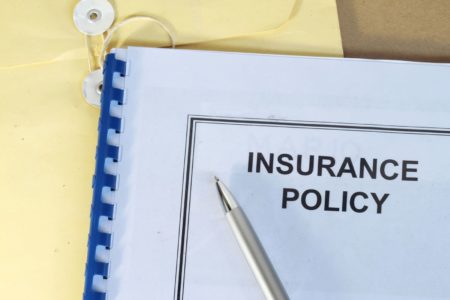8:00 - 17:00
Opening Hour: Mon - Fri
Wisconsin was one of the last two states to adopt mandatory auto insurance. Former state senator John Lehman told the Milwaukee Journal Sentinel that having car insurance was “vital for being a good citizen.”
State legislators decided that if drivers wanted to go on the road, they should make sure their vehicles had adequate insurance coverage. “If you can’t afford to do that,” Lehman said, “then you shouldn’t be on the road.”
Wisconsin’s mandatory car insurance law went into effect June 1, 2010. Legislators selected minimum amounts and categories of coverage for Wisconsin drivers.
Compare car insurance rates right here to find the coverage you need for the right price! Enter your ZIP code to get started.
Table of Contents

Auto insurance can be confusing and complex. Understanding common insurance policy categories can help you comply with Wisconsin’s minimum auto insurance requirements and find the best policy for your driving needs.
Car insurance policies can have up to six different parts. Each category covers different situations that could result in a claim and is priced separately.
Bodily injury liability coverage pays for injuries suffered by people in another car if you cause an accident.
If you or others on your policy are driving your car with permission and cause an accident, bodily injury liability will pay for the other party’s injuries.
The Insurance Information Institute says that it’s important to consider your assets, such as a home and savings when comparing bodily injury liability coverage. You could be sued for a large sum of money following an accident.
PIP or medical payment coverage will pay for treatment costs of the driver and passengers in your car (including you) regardless of the fault of an accident. It could potentially pay for lost wages or other costs for services normally performed by the person who is injured, such as home health care or child care.
Enter your ZIP code below to view companies that have cheap auto insurance rates.

Property Damage Liability insurance pays for damage caused by your car to someone else’s vehicle or property, like running into a mailbox or light post.
Collision coverage pays for damage to your car that occurs during an accident. Even if you are at fault, collision coverage will pay to repair your car, minus the deductible amount you are expected to pay on your own.
Deductible amounts usually vary between $250 and $1,000. The higher your deductible, the lower your premium.
Comprehensive coverage reimburses you for repairs if your car is damaged from anything other than collision. This could include damage from weather, theft, vandalism, hitting an animal, etc.
Many people don’t think about this type of coverage when they are looking for auto insurance, but it could repair the following types of damage:
Deductible amounts for comprehensive coverage can range from $100 to $1,000, or even higher.
Although Wisconsin requires drivers to have mandatory auto insurance, some drivers don’t follow the law. Other drivers have the bare minimum, which may not be adequate to pay for all necessary costs.
If you are struck by a car while walking, underinsured or uninsured motorist coverage can also pay for your costs.

Insurance companies abbreviate coverage names after they are mentioned the first time. For example, uninsured motorist coverage is abbreviated as UM and underinsured motorist coverage as UIM.
Insurers also abbreviate the amounts and types of basic liability insurance. If you see ($50,000/$100,000/$15,000) or (50/100/15), the three amounts refer to the maximum funds the insurer will pay under different circumstances.
The first two numbers refer to bodily injury maximum payments for one person and per incident. The last number is the maximum amount payable for property damage.
Wisconsin requires drivers to have insurance policies with minimum basic liability coverage of $25,000 for one person, $50,000 for two or more people per accident or incident, and $10,000 for property damage.
You must also have uninsured motorist coverage of $25,000 for one bodily injury, and $50,000 for two or more people per accident or incident.
Wisconsin accepts proof of insurance using form SR-22. You should make sure your insurance company is licensed to provide coverage in Wisconsin.
The Wisconsin Department of Transportation receives most SR-22 forms providing proof of financial responsibility directly from insurance companies. The DOT receives electronic filings within one or two days.
You will still have to maintain the minimum insurance coverage, but the Wisconsin State Insurance Commissioner advises you to contact your insurance company and suspend any coverage related to driving so your premium will be reduced.
If you don’t have the mandatory minimum insurance in Wisconsin, you can face a fine of up to $500. If you are pulled over without proof of insurance, your fine is only $10, but if you provide an officer with false insurance information, you could be fined up to $5,000.

Wisconsin’s minimum required auto insurance coverage doesn’t cover every circumstance that could arise if an accident occurs. Basic bodily injury liability coverage of $25,000 per person may sound like a lot of money, but it won’t cover most hospital bills.
If you are in an accident, you could face a lawsuit for a large amount of money. The Wisconsin Commissioner of Insurance informs consumers that if they are sued and have inadequate insurance coverage, they could lose the following:
Wisconsin’s required insurance also doesn’t cover damages to your car in an accident, regardless of which driver is at fault.
Take your car’s value and your family and financial situation into consideration when you compare car insurance coverage and companies.
Enter your ZIP code into our free rate comparison tool below to see how much you could save.
States